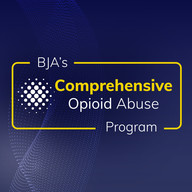 In December, the Drug-Free Communities Program (DFC) awarded 201 new and continuing grants, totaling approximately $25 million, to community coalitions throughout the U.S. Coalitions utilize the seven strategies for community change to implement locally relevant youth substance use prevention activities in their communities. These activities include providing information, enhancing skills, enhancing access, providing support, educating and informing, changing consequences, and changing physical design. Yearly evaluations show that the Drug-Free Communities Program is working. In 2019, DFC coalitions reported that substance use and misuse declined for youth living in DFC-funded communities.
Management and treatment of opioid use disorder (OUD) during pregnancy is associated with improved maternal and infant outcomes. The Centers for Disease Control and Prevention (CDC) established the MATernaL and Infant NetworK to Understand Outcomes Associated with Treatment of Opioid Use Disorder during Pregnancy (MAT-LINK) to monitor more than 2,000 mothers and their infants using data collected from geographically diverse clinical sites. This project will lead to better understanding of maternal, infant, and child health outcomes associated with management and treatment of OUD during pregnancy. Learn more in this report.
 |
Stress is a major concern among American Indian/Alaska Native populations because of the toll it takes on mental and physical health, as well as the strong relationship between stress and relapse into addictive behaviors. Stress is also exacerbated by the historical trauma and systemic injustices experienced by specific tribal populations. The Bureau of Justice Assistance recently published a brief that takes a deep dive into how stress affects behavioral health outcomes in Native American populations, ways to mitigate stress, and the implications of stress resiliency for tribal communities.
|